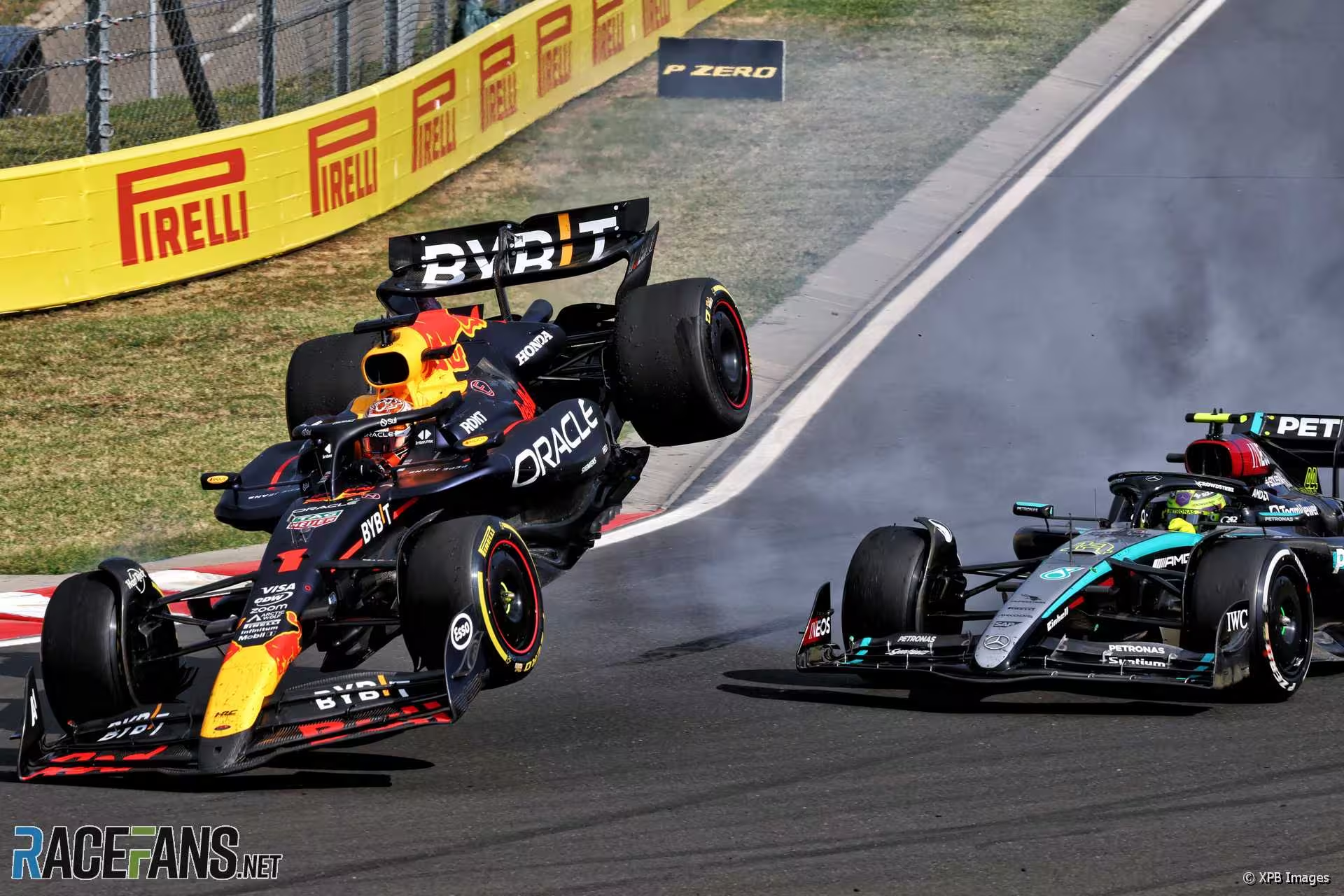Mercedes admitted they were surprised Lewis Hamilton’s car wasn’t damaged by his collision with Max Verstappen during the Hungarian Grand Prix.
The pair tangled on the 63rd lap of the race when Verstappen attempted to overtake Hamilton on the inside at turn one. His left-rear wheel rode over Hamilton’s right-front, pitching the Red Bull up into the air.
Both drivers were able to finish the race. Verstappen had to be inspected by the FIA Medical Delegate afterwards due to the severity of the impact when his car hit the ground.
Mercedes technical director James Allison admitted they thought Hamilton’s car would have picked up some damage from the contact.
“When we saw it happen – as, I guess, same for everyone watching it around the world – it was such a dramatic collision that it seemed highly unlikely to imagine that both cars were going to escape unscathed,” said Allison in a video released by the team. “But in our case, the car was was completely unscathed.
“Lewis was able to proceed to the flag without really any detriment on his performance. So it’s a tribute, I guess, to how strongly we design it these days. But also, a good slab of good fortune in there as well, because it wouldn’t have taken much more than that, I think, to have swiped the corner off the car.”
Allison also shed light on the circumstances which led to George Russell being eliminated in the first round of qualifying for the second year in a row at the Hungaroring, as he had to pit to avoid running out of fuel. He said the team failed to ensure he did slow laps between quick runs as the track dried, which would have reduced his fuel consumption.
Advert | Become a RaceFans supporter and
“Our Q1 for George was a mess,” Allison admitted. “Some part of it was mistakes made by George, but the majority, the centre of gravity of the mistakes, were mistakes that the team made.
“The definitive thing came in the second run. The second run was on a track which at that stage was drying and sadly, George, through a series of miscommunications between us and him, ended up, instead of doing a fast [lap] and [then] a slow lap and then a fast – for the best he could make of a situation that was difficult that we’d put him in – he chose to do a fast and then a consecutive fast.
“[This meant] that by the time he got to his last lap, which was already one lap sooner than we would have done if we put the right amount of fuel in the car, the tyres…
Click Here to Read the Full Original Article at RaceFans…

